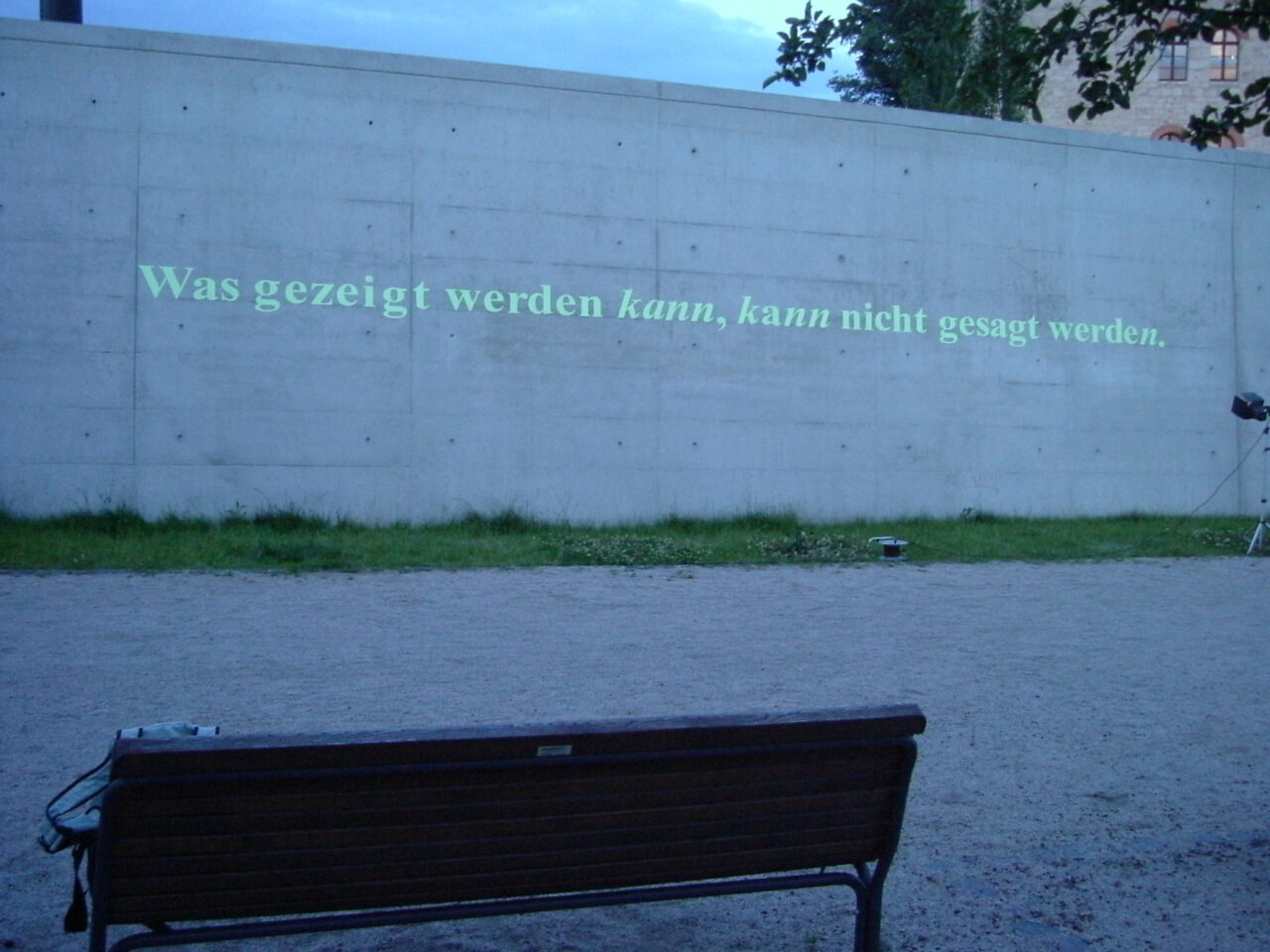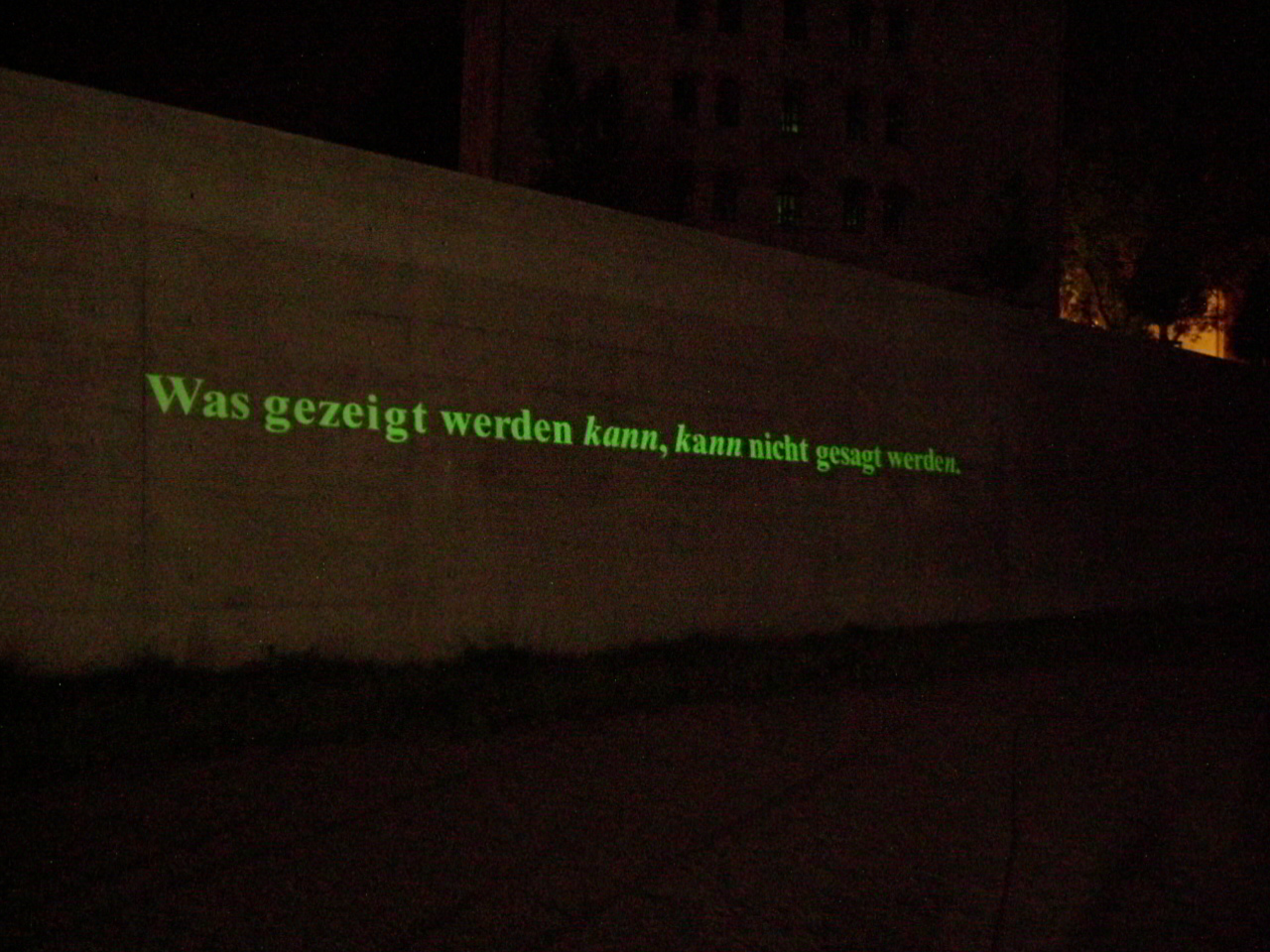
WAS GEZEIGT WERDEN KANN, KANN NICHT GESAGT WERDEN / What can be shown, cannot be spoken | WEIMAR 2004
About This Project
An individually designed project, a public intervention and in situ temporary installation οn a wall designed by the architect Luigi Snozzi, as well as a parallel action, chatting with the people living there, about the project the language and history of the place. The materials I used were plastic printable foils and fluorescent phosphorus paint, as well as an electric system with headlights. The duration of the intervention was 7 days, and the size of the phrase 0,35X10m. It was presented on the site, in the city area Neues Bauern am Horn in Weimar-Germany, on June 2004, and was held within the framework of the Postgraduate program Art in public space and new artistic strategies, as well as within the collaborative project On The Edges [An den Rändern], between the Bauhaus University of Weimar and the municipal authority of the city for the formation of public spaces. It exists in photographs and video-documentation.
Keywords: spatial, language, monumental, aura
During a period of several days a phosphor writing (a Ludwig Wittgenstein quote) appears phantom-like on a famous prominent wall in Weimar. It is a sign and, at the same time, a comment on the specific quality of a location, an ex-army campus -nowadays a contemporary architectural urban site. I signified this spot in an absurd way, and initiated a different perception about the energy of the place to inhabitants and passersby of this neighborhood.
In the art of sculpture discourse and reason is an inner part of the work. I used this abstract philosophical phrase of the old German language of Ludwig Wittgenstein Was gezeigt werden kann, kann nicht gesagt werden [What can be shown, cannot be said (free transl. by the writer)] for many reasons. First, I use it in a symbolic and abstract way, in order to pay tribute to the teaching of my teacher Vassilis Papaioannou. To teach sculpture, he always used the heightened physical and perceptual sensations, during the modern bengiaminic ethos of attention in a work of art, and showed the signs on the sculptural body, but almost never spoke of them, did not explain them with speech. Secondly, to brand the place in a historical, socio-political level, that is, where the phrase was placed -a former army centre in Weimar and now modern, from the top designed, residential plan, in the area Neues Bauern Αm Horn in Weimar. The phrase even makes a further aesthetic dialogue with the architecture of the place, being made of phosphorus plastic letters, placed for a week on a wall which is considered a work of art by itself, since it is designed by the famous architect Luigi Snozzi. The monumentality of the phrase is undone by the way it was made: during the day it does not appear due to the superficial white color of phosphorus, and during the night it looks like a ghost, as it radiates a “muffled” light, in an area crowded by ghosts of the past.
BAUHAUS UNI-WEIMAR DE
Date
June 15, 2004






